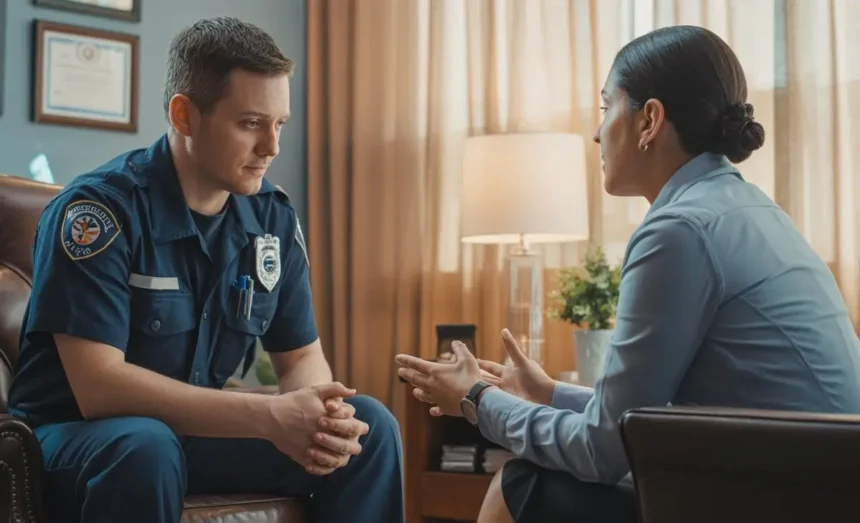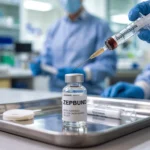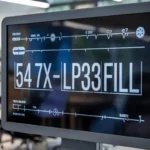Every day, first responders deal with high-stress situations that are life-changing, and that most people will never have to deal with. For firefighters, police officers, and paramedics, as well as emergency dispatchers, the job can be traumatizing. Even the most resilient professionals may find that severely negative situations take a toll on their mental health and well-being. This is why specialized PTSD Treatment for First responders in california is essential to help our heroes heal the invisible wounds of their field.
Integrated care is the first approach to post-traumatic stress, especially with first responders, with multiple evidence-based treatment options. To see for yourself the multiple professional options available, visit PTSD Treatment for First Responders in california. Dedicated programs are helping first responders regain their mental and emotional balance.
Understanding PTSD in First Responders
The mental health condition Post-Traumatic Stress Disorder, also known as PTSD, can develop as a result of distressing events someone has experienced or witnessed. It goes without saying that first responders are exposed to trauma. Most cope well, but for some, repeated exposure to horrific situations can overwhelm and mentally strain them.
An increasing number of people are being treated for Post Traumatic Stress Disorder through First Responders in California, so that symptoms can be treated early. Some symptoms include flashbacks, nightmares, irritability, and emotional detachment. They might include insomnia, chronic fatigue, and other illnesses, too. If not treated, they can escalate into other mental disorders, substance abuse, and isolation.
What makes Post Traumatic Stress Disorder different in First Responders is that the trauma is not a one-time event; it is cumulative. Every emergency call, every accident, and every rescue adds to the trauma. If this continues, the brain will not be able to relax and will be in a constant state of fear or danger.
Recognizing trauma through the lens of these professionals is the first step towards developing efficient recovery programs to replace what is taken and prepare them for the emotional toll.
The Unique Challenges Faced by First Responders in California
California’s First Responders experience unique conditions in addition to their job stress. During natural disasters, like wildfires, earthquakes, and floods, they must act quickly and respond to dangerous conditions. Additionally, there is a higher incidence of emergency violence, accidents, and medical incidents.
Those in PTSD Treatment for First Responders in California claim that working in these occupations for long periods is one of the major reasons for their struggles. Although training may help in staying calm in emergencies, the adrenaline rush impacts the personnel in the long run. With time, the bodies of these individuals become used to the ‘fight or flight’ response, leading to fatigue and emotional burnout.
The culture within first responder professions also contributes to challenges in seeking help. Many fear that admitting to emotional distress could be seen as weakness or harm their reputation. This stigma often delays treatment and further allows the symptoms of PTSD to worsen.
In California, one of the primary goals is working on the creation of safe spaces for the first responder community that allow them to seek confidentially and compassionately receive help. California recognizes the need to amplify discussions on mental health within first responder occupations and how timely interventions are life-saving.
Current Treatment Options for PTSD
Psychotherapy and medications have become the two main focused approaches to treating PTSD. Although these therapies are still effective, there are new approaches being incorporated that focus on the integration of mental and physical therapies.
California offers PTSD Treatment for First Responders programs that promise to prioritize trauma-focused Cognitive Behavioral Therapy (CBT). This helps individuals reshape and reframe their thoughts towards Optometrists. EMDR (Eye Movement Desensitization and Reprocessing) serves as another powerful method to minimize emotional attachment to traumatic memories and helps in reprocessing them.
In some cases, medications to alleviate anxiety, depression, and sleep problems will also help with the symptoms, but the symptoms are still there. To alleviate symptoms, more holistic approaches are needed to restore the client’s emotional, mental, and physical equilibrium.
Integrated with other focus areas of care, more and more facilities to address grief and loss incorporate mindfulness, exercise, and even diet with the goal of promoting healthy trauma recovery. These strategies build emotional resilience and restore a sense of trauma control.
Resting with fortified emotional resilience, stability, and a sense of trauma control provides first responders healing, purpose, and the ability to move forward.
The Role of Therapy in PTSD Recovery
As one of the recovery processes for PTSD, the individuals are able to process traumatic events with the first responders in a safe and structured setting, with the absence of judgment. Trauma-informed therapists, specializing in first responder psychology, know the trauma and the very special markers of pressure that these heroes hold. With PTSD treatment for first responders in California, professional trauma treatment starts with the most fundamental building block technique from the Stabilization Phase—helping clients manage triggers and teaching them other coping techniques. After some time, trauma work can begin, allowing clients to face the most painful memories and learn some emotional regulation techniques.
Individual therapy provides an opportunity to work on personal history and experience, while group therapy balances the individualized attention by getting clients some peers with whom they can share common issues. This therapeutic alliance-building helps in the trust process and combats the feeling of isolation.
Family therapy adds value in the understanding of PTSD by loved ones, and builds the communication necessary to reunite relationships that may have been damaged by trauma.
Therapy helps the first responders gain self-discovery and self-esteem by enabling self-differentiation within professional identity and emotional trauma.
Innovative Approaches to PTSD Treatment for First Responders in California
New treatment methods for addressing trauma are improving the way recovery from PTSD is achieved. These methods integrate neuroscience, psychology, and holistic wellness, resulting in impactful and individualized healing journeys.
Newer PTSD Treatment for First Responders in California offers therapeutic options like neurofeedback, virtual reality exposure, and somatic experiencing. Neurofeedback teaches the brain self-regulation, which eases hypervigilance and anxiety. With the help of virtual reality therapy, first responders can safely revisit traumatic incidents and learn how to reframe the trauma. Somatic experiencing aids in trauma releasing through gentle movement and mindfulness.
Other therapeutic options like equine-assisted therapy, art therapy, and adventure therapy are also very effective. With these approaches, participants learn to trust again, develop emotional regulation, and restore their sense of joy.
The focus of these new therapies is symptom management, helping first responders restore their sense of self and reconnect to their families and communities. As treatments improve, the evolution of recovery focuses on empowerment.
The Importance of Peer Support Programs for PTSD Treatment for First Responders in California
The act of sharing traumatic experiences can help first responders heal. They can connect with and learn from someone who has also experienced trauma. Sharing and storytelling facilitate the breaking of isolation and stigma.
In the PTSD Treatment for First Responders in California program, peer support groups promote a secure environment for candid conversations and bonds. These systems often match seasoned responders in the recovery process with those currently struggling, creating mentorships and encouragement.
Within workplace initiatives, peers serve as Mental Health Champions, who promote early help-seeking behaviors among colleagues. Throughout California, training, including emotionally peer-led education and wellness programs, has become part of the focus in everyday practice.
This explains healing and recovery as a real and attainable goal, and, most importantly, a journey that is valued and embraced in the responders’ workplace community and culture.
Along with clinical treatment, peer programs provide a sense of trust, resilience, and the blueprint for recovery.
The Future of PTSD Treatment for First Responders in California
The future of trauma care for first responders absolutely has great potential. With the increase in trauma awareness, the growth and expansion of trauma facilities continue.
The most advanced PTSD Treatment for First Responders in California currently available combines compassion and science to the greatest degree. The focus has definitely become proactive wellness, the teaching of trauma coping mechanisms prior to experiencing trauma.
Technology’s role in support systems will expand. Digital therapy systems, telehealth counseling services, and mobile wellness apps provide instant assistance, particularly for first responders who work in remote locations and irregular hours.
There are positive changes in workplace culture, too. Organizational wellness, peer advocacy, and leadership training are becoming integral parts of first responders’ workplace environments and are helping to improve the psychological and emotional safety of responders.
Innovation in these areas will continue to center on the recovery, resilience, and humanity of those behind the uniform. There is a tremendous amount of strength and determination in those who serve.
Conclusion
For so many first responders, the battle is PTSD, and the fight is invisible. They need to be provided with high-quality, personalized care that understands and values their own trauma and their service to others. Investing in new, empathetic care will, in turn, provide the community these heroes serve.
Trust, time, and professional support are required to heal. The right initiatives turn pain into a journey of rediscovery. At First Responders of California, we provide responsive PTSD Treatment for First Responders in California and a commitment to caring for each responder. We will care in order for them to rediscover their peace, strength, and purpose, and help restore their hope and resilience.







